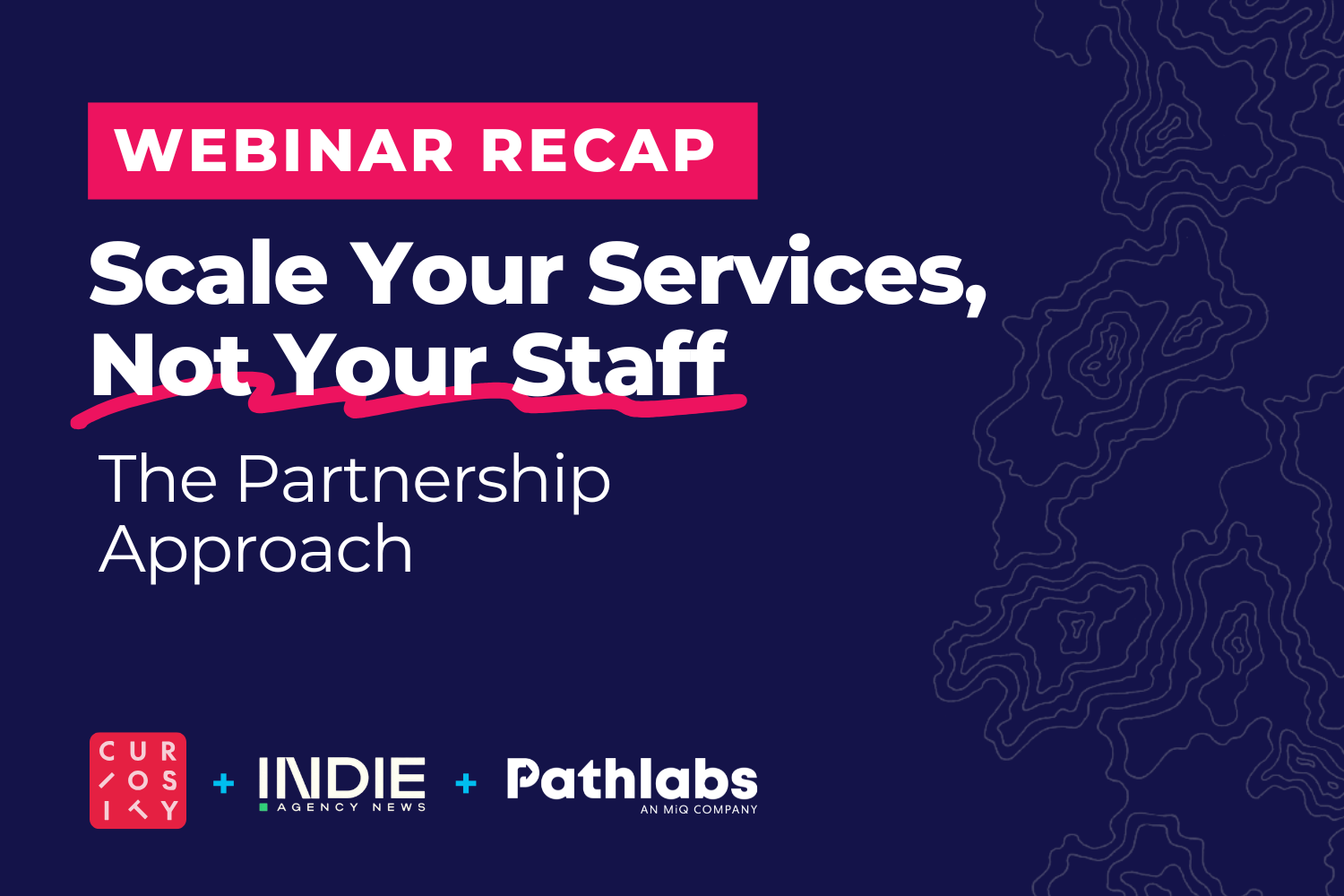Online to Offline Attribution: Tracking Conversions Across Channels
| Pathlabs Marketing |
| August 11, 2023 |
For a long time, attribution has been a prevalent topic in the advertising industry. However, one of its facets that only a few marketers talk about is online-to-offline attribution. This blog explains what that is, its challenges and benefits, and how to apply this concept best.
What is Online to Offline Attribution?
Online-to-offline attribution is measuring the impact of online touchpoints on driving offline user actions or conversions.
Marketers can create various online touchpoints like digital advertisements, social media posts, landing pages, and more. These touchpoints guide users through the marketing funnel and encourage them to take action, such as making online purchases, subscribing to newsletters, or watching a video to completion.
If the touchpoints and user actions are both online, the marketer can more easily track and attribute them using different software and tools.
However, a challenge arises when marketers create online touchpoints and allow users to take action offline, such as making in-store purchases, calling for inquiries, scheduling appointments, or physically visiting locations.
Yes, the user acted, which is excellent. But since it was offline, the marketer can’t as easily trace this action back to their online touchpoints. They don’t know if the user initially engaged online, then dropped off and acted offline. Or if there was no online touchpoint engagement and the user acted due to a different factor.
To overcome this dilemma, marketers have developed online-to-offline attribution methods. These methods aim to bridge this gap, providing a way to attribute offline user action and conversions back to online touchpoints.
Why Is Online to Offline Attribution Important?
Tracking ROI and Marketing Effectiveness
Digital advertising is expensive. Given the investment marketers make to create online touchpoints, it is worth taking into account how they trigger offline user actions. If the marketer overlooks how users act offline, they may miss out on a significant chunk of business.
Identifying Successful Marketing Channels
It takes lots of testing to identify the most effective online media channels in which to create touchpoints.
Attribution helps in this process by providing data marketers can analyze along with their KPIs to identify their best-performing touchpoints and those that underperform. Armed with this information, they can lean into the touchpoints that work.
In the context of online to offline attribution, it is also worth assessing this additional offline data. Marketers may be surprised to see that one of their online channels impacts offline user actions more than they thought, creating room for opportunity.
Fine-Tuning Ad Campaigns
Attribution compels marketers to consider all of their online touchpoints and meticulously map out their funnel – a helpful exercise. Understanding the impact of online touchpoints on offline action encourages marketers to hone in on refining the connection between the two realms and potentially eliminate bottlenecks that hinder user action.
The Challenges of Tracking Offline Attribution
Offline attribution is challenging due to its inherently untrackable nature. Marketers may be able to track a user as they move through the funnel online; however, if the user decides to convert through an offline channel, this creates uncertainty about the true impact of why they acted.
“Attribution, in general, is also just very difficult. It requires significant effort and dedication to be truly valuable and effective. Successful marketers must invest time and budget to build a robust and viable attribution strategy. However, it’s crucial to acknowledge that even with the best efforts, it still might not work.
Therefore, marketers should also get creative and explore additional mechanisms to assess campaigns and touchpoints and make this connection between online to offline. ”
Methods for Online to Offline Attribution
Marketers often use the following methods to attribute online actions to offline results:
Call Tracking and Attribution
Assigning unique phone numbers to different marketing campaigns allows marketers to track which campaigns drive offline customer calls.
For example, if a marketer runs a display and search ad campaign, they can provide a phone number ending in 1234 for the display campaign and another number ending in 1235 for search. The number a given user calls can then be traced back to the corresponding online campaign.
Coupon Codes and Unique Identifiers
Using unique coupon codes or identifiers in online promotions enables businesses to track the impact of specific campaigns on offline purchases.
Many retail stores use this with CTV: they advertise a specific sale and coupon code. Then, when users apply it offline in the store, they can link it back to the CTV campaign.
Customer Surveys and Feedback
Gathering customer feedback and conducting surveys to understand better the customer journey and the influence of online touchpoints.
Marketers can provide these surveys in person when users act offline or try to find a way to follow up with the user digitally. Marketers can ask direct questions in these surveys to help attribute to touchpoints: Where did you hear about us? What encouraged you to make a purchase today? How do you most commonly engage with our brand? What is your email and phone number?
Footfall Attribution
Marketers can deliver relevant ads to users with specific promotions or indicators; then, when users act offline, coming into the physical location, the marketer can tie this ‘footfall’ traffic data back to the given targeting campaign.
Beacons
Ad Tech suggests using Bluetooth-enabled beacons for online-to-offline tracking. Placed in physical business locations, these beacons can detect users' devices if they have engaged online and send relevant notifications when nearby.
Mobile Wallets and Payment Collectors
Mobile wallets like Apple Wallet and Google Pay enable businesses to distribute digital passes, loyalty cards, and coupons to users' smartphones. These digital passes contain unique identifiers the marketer can tie to specific online campaigns or touchpoints. When users engage with these passes in physical stores, such as by redeeming a coupon or making a purchase, the mobile wallet tracks and reports the offline action to the online campaign.
On the other hand, payment connectors establish connections between online advertising platforms and offline payment systems businesses use. By integrating with point-of-sale (POS) systems and payment processors, payment connectors can attribute in-store transactions to specific online ad campaigns.
The Role of Data Integration and Analysis
Data serves as the foundation of attribution efforts. For online attribution, marketers track touchpoints and index other data to develop attribution models, using different platforms and technologies. At Pathlabs, for example, we often utilize multi-touchpoint attribution practices, leveraging path-to-conversion reporting from The Trade Desk.
In the case of online-to-offline attribution, marketers also gather data, simply in more unique ways. Combining this online to offline data with other key performance indicators (KPIs) empowers marketers to track and optimize their marketing endeavors effectively.
“It is crucial to acknowledge the current landscape, where data is generated rapidly, posing a risk of distraction from essential insights. Therefore, marketers should prioritize understanding their objectives, target audiences, and what positive performance looks like before approaching any complex attribution. ”
Best Practices for Online to Offline Attribution
To make the most of online-to-offline attribution, marketers should follow these best practices:
Defining Your Key Performance Indicators (KPIs)
Marketers often develop tunnel vision while performing attribution, honing in too much on boosting credit for specific touchpoints or shortening the funnel.
While analyzing attribution data is crucial, leveraging KPIs is equally important. Attribution will reveal touchpoints’ contributions to actions or conversions, while KPIs can expand the big picture and provide data that tracks performance against objectives.
Ensuring Consistency in Tracking and Measurement
Performing online-to-offline attribution is not a one-time task. Marketers can't expect to gather data for a week and draw significant conclusions. This process takes time, sometimes even six-plus months. Throughout this period, marketers should continuously track interaction metrics related to online touchpoints, online user actions, and offline user actions. Building a robust data foundation provides more opportunities for interpretation.
Employing a Test-and-Learn Approach
Adopting an optimization mindset and being open to experimentation is crucial for navigating the complexities of online-to-offline attribution. Marketers should actively educate themselves about various offline attribution methods available and test a selection of them to identify which ones yield the most accurate and insightful data.
They should also explore creating different touchpoints, whether with paid advertising, landing pages, or content, to gauge whether users respond more or less offline. This learning process will help achieve better results moving forward.
When in Doubt, Always Consider the Context
“When conducting online-to-offline attribution, it’s crucial not to overlook external factors influencing how users act.
For example, attributing a decline in offline performance to an under-optimized touchpoint might not be accurate; it could be due to seasonality. Additionally, it’s essential to consider the psychology aspect: users are not just data points but complex individuals whose behavior may not always align with attribution models.
Each individual engages uniquely with a brand and marketing campaign, going through a distinct awareness and consideration process, and conversion often takes time when understanding the connection between creating these touchpoints and ultimately driving users to act offline. ”
In Conclusion…
Online-to-offline attribution is a crucial tool for marketers to assess the influence of their online interactions on offline user behaviors. Its utility is particularly evident for teams and brands facilitating online and offline user engagement.
Nonetheless, as you navigate the realm of online-to-offline attribution, exercise prudent judgment. While attribution can effectively illuminate the performance of various touchpoints, it's essential to acknowledge that it might not always offer a definitive explanation for user actions.
In the dynamic marketing landscape, a comprehensive understanding of user behavior requires a holistic approach that considers both observable patterns and the intrinsic motivations that drive them. By combining the insights gleaned from online-to-offline attribution with qualitative research and context-sensitive analysis, marketers can inch closer to unraveling the intricate tapestry of user decision-making.












